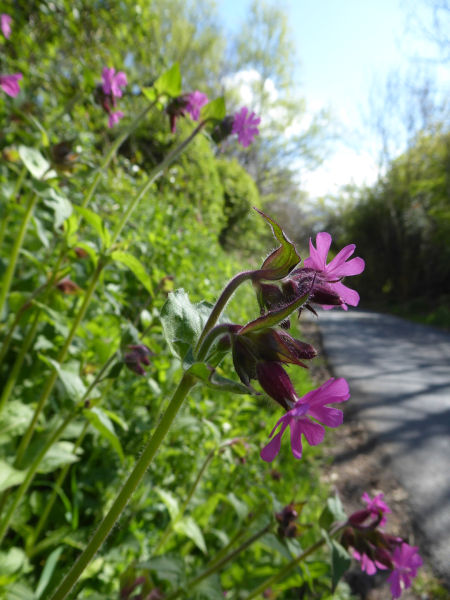
Saving What’s Left…
With 97% of the UK’s wildflower meadows lost since the 1930s, surely now is the time to start saving the remnants we have left?
Rural verges are often remnants of vanished Dales hay meadows and if better managed will regenerate into flower rich, biodiverse havens for insects and birds. Species rich verges also store more carbon than ‘neat and tidy’ verges.
Adopting a nature positive way of managing verges and other grassland areas – such as village greens and churchyards – will help regenerate them back into flower rich, biodiverse havens for insects and birds.
Poorly-timed cutting regimes is the main cause of decline in species in our roadside verges. If plants are cut back before they are allowed to set seed, then most of them will not be able to grow next year. Over time, this leads to a decline in the abundance of flowering plants and a corresponding loss of insects and birds.
The principles of nature positive verge management are simple:
- Cut verges or other village grassland no later than April and clear cuttings away to prevent the build-up of thatch, which increases soil nitrogen levels and can encourage docks, nettles and thistles to take hold
- Do not cut the grass between May and August (inclusive) to allow plants to flower and then set seed
- If cutting can’t be avoided, consider mowing paths or narrow edge strips but leave some areas uncut as a wildlife refuge. This can also help to address concerns about untidiness and safety
- Remove invasive weeds (nettles, thistles, docks) by chopping down/uprooting, not spraying.
- Do a second cut in September – again clearing all cuttings away.
In other words: Cut Less, Cut Later, Takeaway!
Our Living Verges campaign – which is guided by plant conservation charity, Plantlife‘s advice – has brought us into discussions with the regional and local authorities responsible for verge cutting and is seeing some good results, but there is more work to be done.
We would very much welcome any information (good or bad) about verges in the Dales, with cutting dates, location details, wildlife sightings and photographs if you have them. Please email Victoria Benn, Membership & Event Officer.
You can also download our Village Biodiversity Guide and Living Verges Monthly Planner for some simple tips on how to make your village more nature positive. Our ‘No Mow’ sign is also a helpful way of letting others know you are making changes to how you manage verges. For further information watch our Living Verges video via the link below:
Read more about Plantlife’s campaign here.